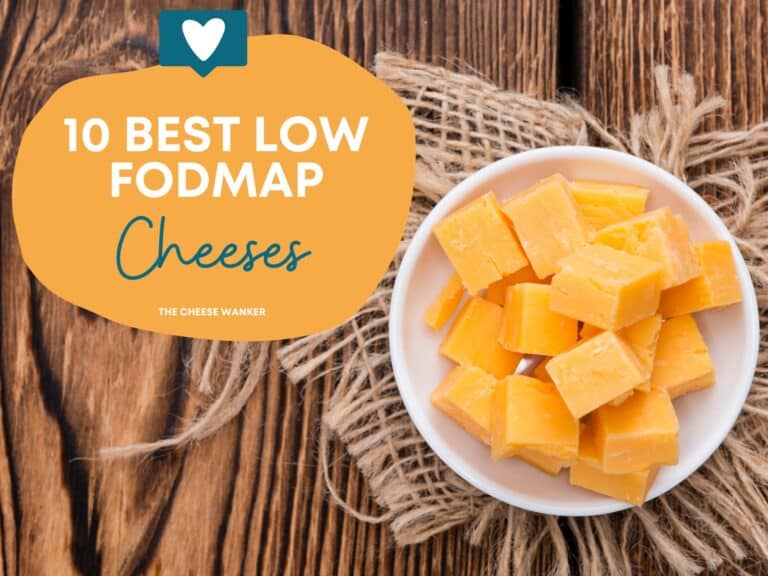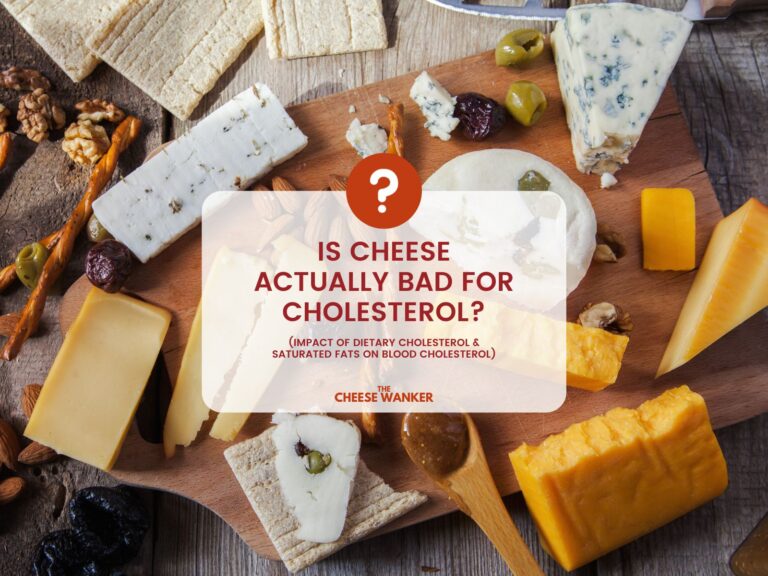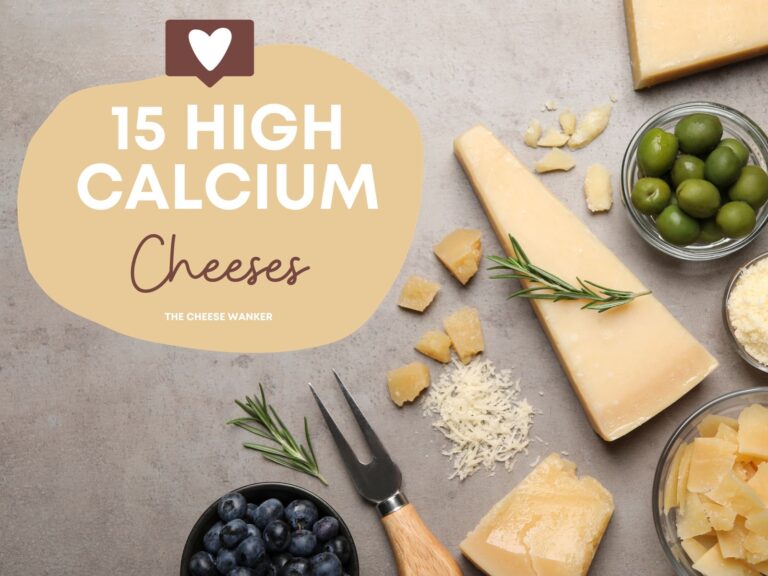In the world of nutrition, proteins are an essential component of a balanced diet. When it comes to high-protein sources, cheeses stand out as a delectable and nutritious option. In this scientific exploration, we will delve into the protein-rich realm of cheeses, uncovering their nutritional significance and highlighting some of the highest protein cheeses.
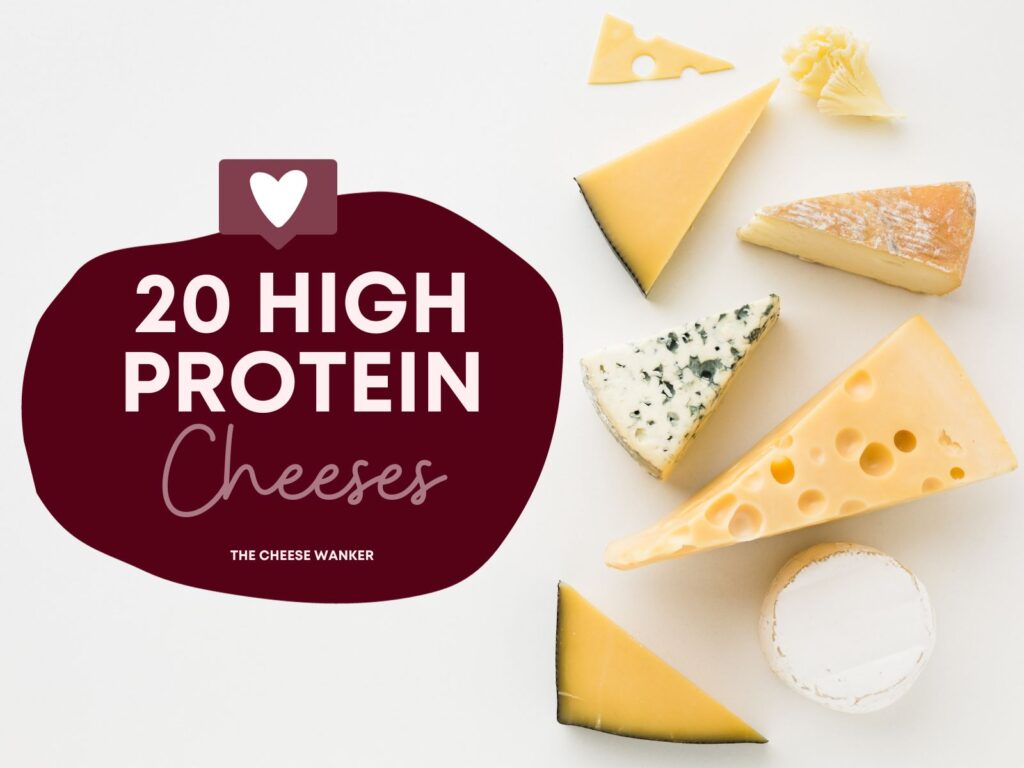
SEE ALSO: Discover our list of the 25 healthiest types of cheese from around the world →
Why is protein important in our diet?
Proteins are complex molecules made up of amino acids, which are organic compounds essential for the structure, function and regulation of the body’s tissues and organs. There are 20 different types of amino acids that can combine in various sequences to form a wide array of proteins, each serving a specific purpose in the human body.
Proteins are fundamental components of the human body, serving a multitude of critical functions that are indispensable for overall health and well-being. Their significance lies in their role as the building blocks of tissues, muscles, and organs.
Muscle health
One of the primary functions of proteins is to facilitate muscle growth, repair and maintenance, making them essential for physical strength and endurance. Additionally, proteins act as enzymes, catalysts that drive various biochemical reactions necessary for metabolism, digestion and energy production.
Immune system and hormones
Proteins are also vital for the immune system, as antibodies, a type of protein, play a key role in defending the body against infections and diseases. Moreover, proteins regulate hormones, ensuring the proper functioning of processes like growth, development and metabolism.
Cell health
They contribute to cell structure, acting as cell membrane components and facilitating cellular communication. Proteins also assist in the transportation of essential molecules throughout the body, such as oxygen and nutrients, and help maintain the body’s pH balance.
In essence, proteins are the cornerstone of human biology, orchestrating a wide range of physiological functions essential for life. A balanced diet rich in protein is crucial to support these functions, ensuring optimal health, physical performance, and the body’s ability to fight off illnesses.
How much protein do we need from our diet?
The amount of protein an individual needs in their diet can vary based on factors such as age, sex, physical activity level and overall health goals. Protein needs are typically measured in grams per kilogram of body weight (g/kg).
Sedentary Individuals
For sedentary adults with minimal physical activity, the recommended dietary allowance (RDA) for protein is about 0.8 grams of protein per kilogram of body weight. This level is generally sufficient to meet the basic nutritional requirements for individuals leading a low-activity lifestyle.
Active Individuals
People who engage in regular physical activities, such as moderate exercise or recreational sports, require a slightly higher protein intake to support muscle repair and growth.
The protein intake for moderately active individuals can range from 1.0 to 1.2 grams per kilogram of body weight. This increased intake helps replenish the proteins used during physical exertion, aiding in muscle recovery and overall fitness.
Athletes and bodybuilders
Athletes and bodybuilders, involved in intense training and frequent exercise, require higher protein intake to promote muscle development and enhance performance.
Protein needs for this group can range from 1.2 to 2.0 grams per kilogram of body weight, ensuring an adequate supply of amino acids for optimal muscle repair and growth.
Special Populations
Certain populations, such as pregnant or breastfeeding women, older adults and individuals recovering from illness or injury, may have specific protein requirements. It’s crucial for these individuals to consult healthcare professionals or registered dietitians to determine their precise protein needs based on their unique health conditions and circumstances.
What types of protein are in cheese?
Cheese is made using milk, and all milk contains protein. Actually, the two main types of protein that are found in cheese are casein and whey protein. Let’s have a quick look at the differences.
Casein protein
Casein accounts for the majority of proteins in cheese, making up about 80% of the total protein content in milk. During cheese production, casein molecules aggregate and coagulate, forming the curd.
This curd is then processed and aged to create various types of cheese. Casein is a slow-digesting protein and is rich in essential amino acids, making it valuable for muscle growth and repair.
Whey protein
On the other hand, whey proteins constitute the remaining 20% of the proteins in milk. Whey is the liquid portion that separates from the curd during cheese production. It contains several proteins, including beta-lactoglobulin and alpha-lactalbumin.
Whey proteins are considered high-quality proteins because they are quickly absorbed by the body and contain all the essential amino acids. Whey protein supplements are popular among athletes and fitness enthusiasts for their rapid digestibility and amino acid profile, aiding in muscle recovery and growth.
List of 20 highest protein cheeses
When it comes to cheeses packed with protein, some varieties stand out as nutritional powerhouses. Here, we explore the top 15 high-protein cheeses that not only tantalise your taste buds but also provide a significant protein boost to your diet.
Grana Padano (36 g)
Grana Padano, a renowned Italian cheese, hails from the Po River Valley. Aged for over 9 months, it boasts a granular texture and a nutty, slightly sweet flavour, making it a versatile choice for grating over pasta dishes or enjoying on its own.
Parmigiano Reggiano (32 g)
Parmigiano Reggiano, often hailed as the “king of cheeses,” is a protected designation of origin cheese from Italy. Aged for 24 months, it has a rich, savoury flavour with a granular texture. Its complexity makes it a favourite for grating over pasta, soups and salads.
Gruyère (29 g)
Next, we have Gruyère, a Swiss cheese celebrated for its nutty and salty taste. Aged for 5-12 months, it melts beautifully, making it ideal for fondues and gourmet sandwiches.
Pecorino Romano (29 g)
Pecorino Romano, an Italian sheep’s milk cheese, is complex and salty. Aged for 8-12 months, it adds bold flavors to pasta dishes and is a classic choice for grating over spaghetti carbonara.
Caciocavallo (29 g)
Caciocavallo, an aged Italian pasta filata cheese, has a spicy, savoury taste. Aged for 2-3 months, it’s often enjoyed grilled or melted in Italian cuisine.
Beaufort (26 g)
Beaufort, a French Alpine cheese, is semi-firm with a rich, creamy taste. Aged for 6-12 months, it boasts a subtle nuttiness and is often enjoyed melted or in traditional Savoyard dishes.
Jarlsberg (26 g)
Jarlsberg, a Norwegian cheese, is mild, nutty and slightly sweet. It has a creamy texture and is widely used in sandwiches and snacks.
Provolone Piccante (25 g)
Provolone Piccante, an Italian cheese, is aged for a minimum of four months, resulting in a savoury and tangy flavour. It’s excellent for grating over pasta or adding depth to sandwiches.
Comté (25 g)
Comté, a French cheese, is made from cow’s milk and aged for 6 to 36 months. It has a complex flavour profile, ranging from sweet and nutty to slightly fruity, making it a delightful addition to cheese platters and gratins.
Monterey Jack (25 g)
Monterey Jack, a mild and creamy American cheese, melts easily and is often used in Tex-Mex cuisine and grilled cheese sandwiches.
Colby-Jack (25 g)
Colby-Jack, a popular American cheese, is a blend of Colby and Monterey Jack cheeses. It has a mild, creamy flavour and is often used in sandwiches and snacks.
Stilton (25 g)
Stilton, an English blue cheese, has a strong, distinctive flavour with blue veins running through it. It’s crumbly, tangy and often enjoyed with crackers or paired with fruits.
Kefalotyri (25 g)
Kefalotyri, a Greek cheese, is salty and tangy, often used in Mediterranean cuisine. It has a firm texture and is ideal for grating over pasta dishes.
Provolone Dolce (25 g)
Provolone Dolce, a younger and milder version of Provolone, is semi-soft with a mild, buttery taste. It’s great for sandwiches, salads and snacking.
Raclette (25 g)
Raclette, a Swiss cheese, is known for its excellent melting properties. It’s often melted and scraped onto potatoes, vegetables and charcuterie in the traditional Swiss dish of the same name.
Pepper Jack (25 g)
Pepper Jack, a variation of Monterey Jack, is flavoured with spicy peppers and herbs. It has a zesty kick, making it perfect for adding a bit of heat to sandwiches and burgers.
Sage Derby (25 g)
Sage Derby, an English cheese, is infused with sage herbs, giving it a unique, earthy flavour. Moreover, its distinctive green marbling makes it visually appealing and a delightful addition to cheese platters.
Edam (25 g)
Edam, a Dutch cheese, is mild and nutty with a smooth texture. It has a distinctive round shape and is often enjoyed with fruits and crusty bread.
Gouda (25 g)
Gouda, another Dutch cheese, comes in various ages, ranging from young and creamy to older and crumbly. It has a mild, sweet taste and is versatile, suitable for snacking, sandwiches and desserts.
Paneer (25 g)
Finally, Paneer, an Indian cheese, is fresh, crumbly and unsalted. It’s widely used in Indian cuisine, often cooked with spices and vegetables in curries and stir-fries.
Best high-protein recipes using high-protein cheese
Embark on a gastronomic adventure as we delve into the world of three high-protein cheeses: Grana Padano, Gruyère, and Jarlsberg. These distinguished cheeses bring unique flavours and textures to the table, transforming ordinary recipes into extraordinary culinary creations.
In this section, we present three delectable recipes, each carefully crafted to highlight the distinct characteristics of these cheeses.
Grana Padano Risotto with Roasted Vegetables
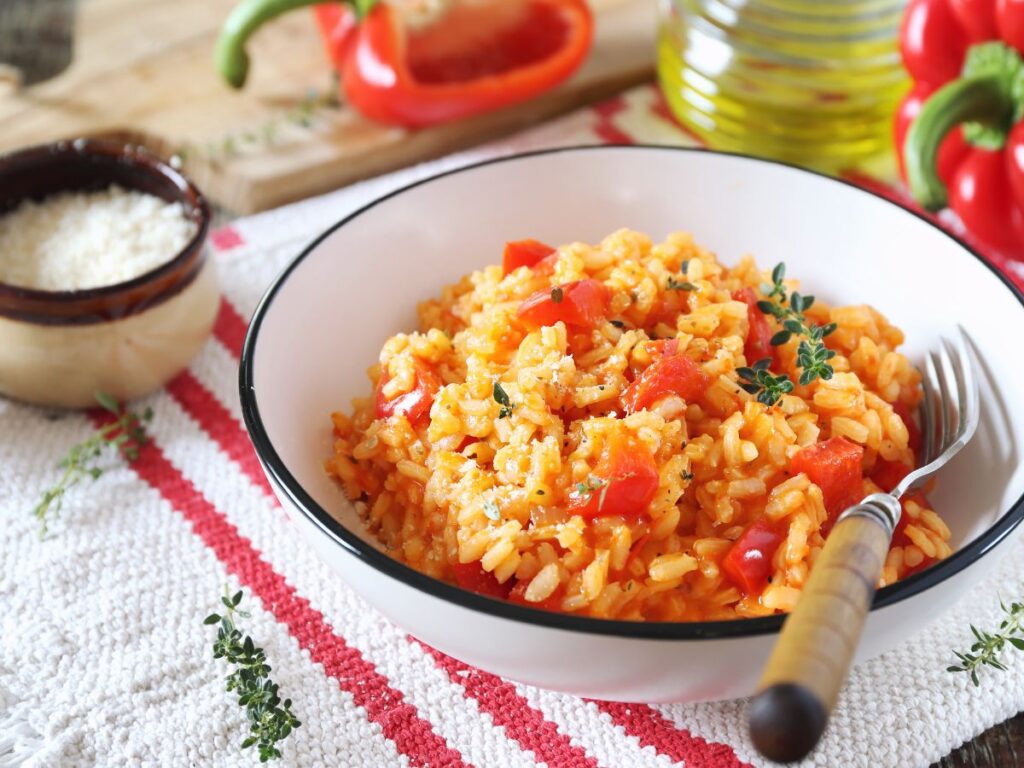
Indulge in a rich and creamy Grana Padano Risotto, where the nutty, salty flavour of Grana Padano cheese beautifully enhances the velvety rice. Roasted vegetables such as sweet capsicum (bell peppers), zucchini and cherry tomatoes add a burst of colour and freshness, balancing the richness of the cheese.
Finished with a sprinkle of freshly grated Grana Padano on top, this dish offers a delightful contrast of textures and tastes. The creamy risotto paired with the savoury notes of Grana Padano and the roasted vegetables creates a gourmet experience that is both comforting and satisfying.
Gruyère and Mushroom Quiche
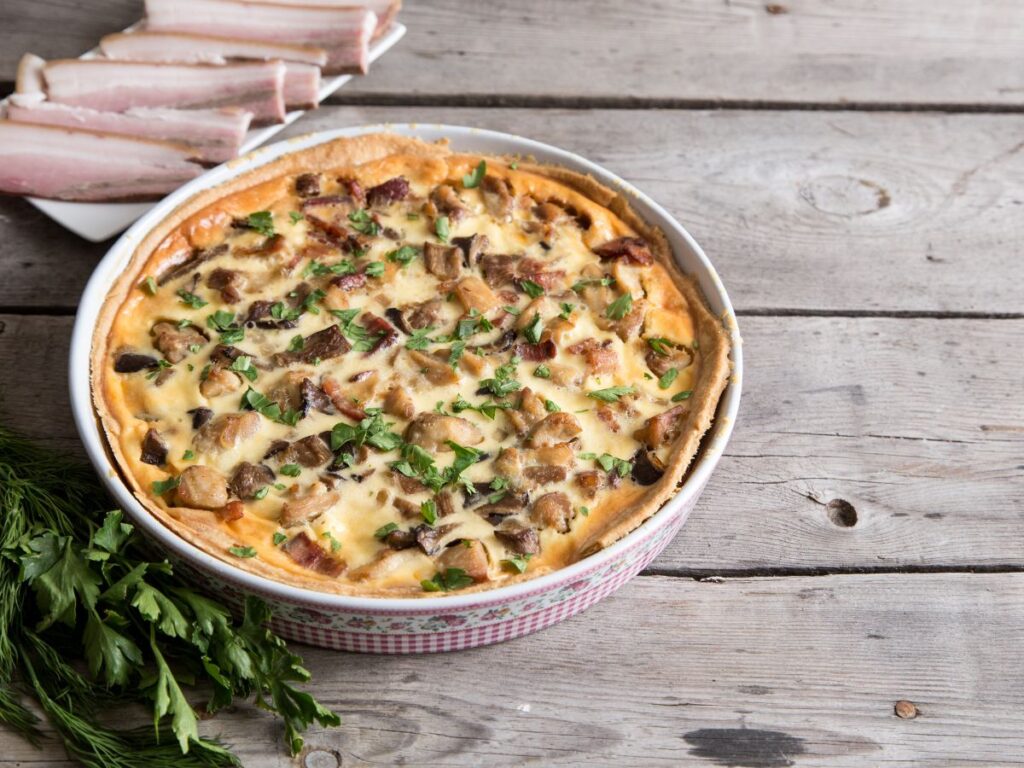
Prepare a delectable Gruyère and Mushroom Quiche that combines the earthy flavours of mushrooms with the creamy, nutty taste of Gruyère cheese. The flaky, buttery crust cradles a filling of sautéed mushrooms, onions and Gruyère cheese, all bound together in a savoury custard.
Baked to golden perfection, this quiche boasts a velvety texture and a harmonious blend of flavours. With each slice, you’ll enjoy the delightful interplay of the earthy mushrooms and the rich, slightly sweet Gruyère, making this dish a sophisticated choice for brunch, lunch, or a light dinner.
Jarlsberg and Spinach Stuffed Chicken Breast
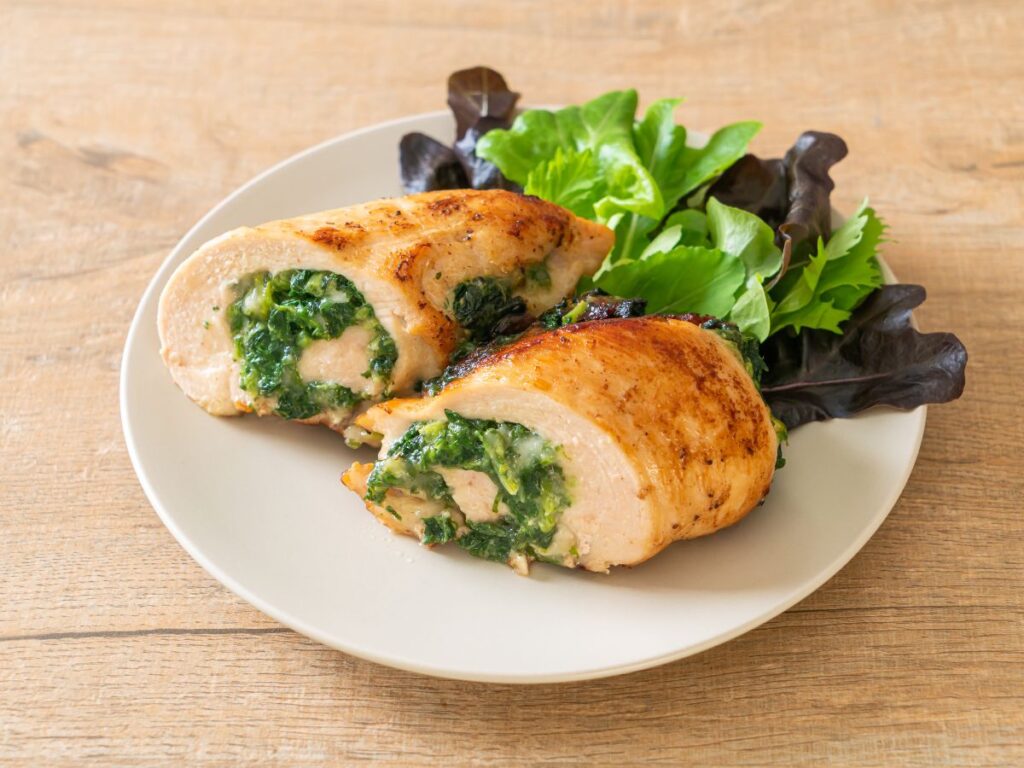
Elevate a simple chicken breast into a gourmet meal with Jarlsberg and Spinach stuffing. Tender chicken breasts are carefully stuffed with a flavourful mixture of wilted spinach, garlic and grated Jarlsberg cheese. The mild, nutty taste of Jarlsberg complements the earthiness of spinach, creating a delectable filling.
The chicken is then baked to juicy perfection, allowing the flavours to meld together. With every forkful, you’ll enjoy the melty goodness of Jarlsberg paired with the wholesome spinach, creating a satisfying, protein-packed dish that’s both elegant and easy to prepare.
Conclusion
In the diverse world of cheeses, there’s an abundance of options to elevate your meals, each offering its unique flavour, texture and nutritional benefits. From the tang of Parmigiano Reggiano to the creamy goodness of Gouda, high-protein cheeses not only tantalise your taste buds but also provide a substantial boost to your daily protein intake.
Whether you’re a fitness enthusiast, a culinary explorer or someone simply looking to add wholesome goodness to your diet, these cheeses offer a delectable way to meet your nutritional goals.
By incorporating these high-protein cheeses into your meals, you embark on a flavourful journey through culinary traditions from around the world. From savoury pasta dishes enriched with Pecorino Romano to gooey sandwiches layered with Pepper Jack, these cheeses cater to a wide range of tastes and preferences.
Moreover, their protein-packed goodness ensures you’re not just indulging your senses but also fuelling your body with essential nutrients.
So, whether you’re grating, melting or savouring these cheeses on their own, remember the wealth of protein and culinary wonders they bring to your table. Embrace the diversity, experiment with recipes, and let these high-protein cheeses redefine your gastronomic experiences.
Here’s to delicious, protein-rich meals that nourish your body and delight your senses.
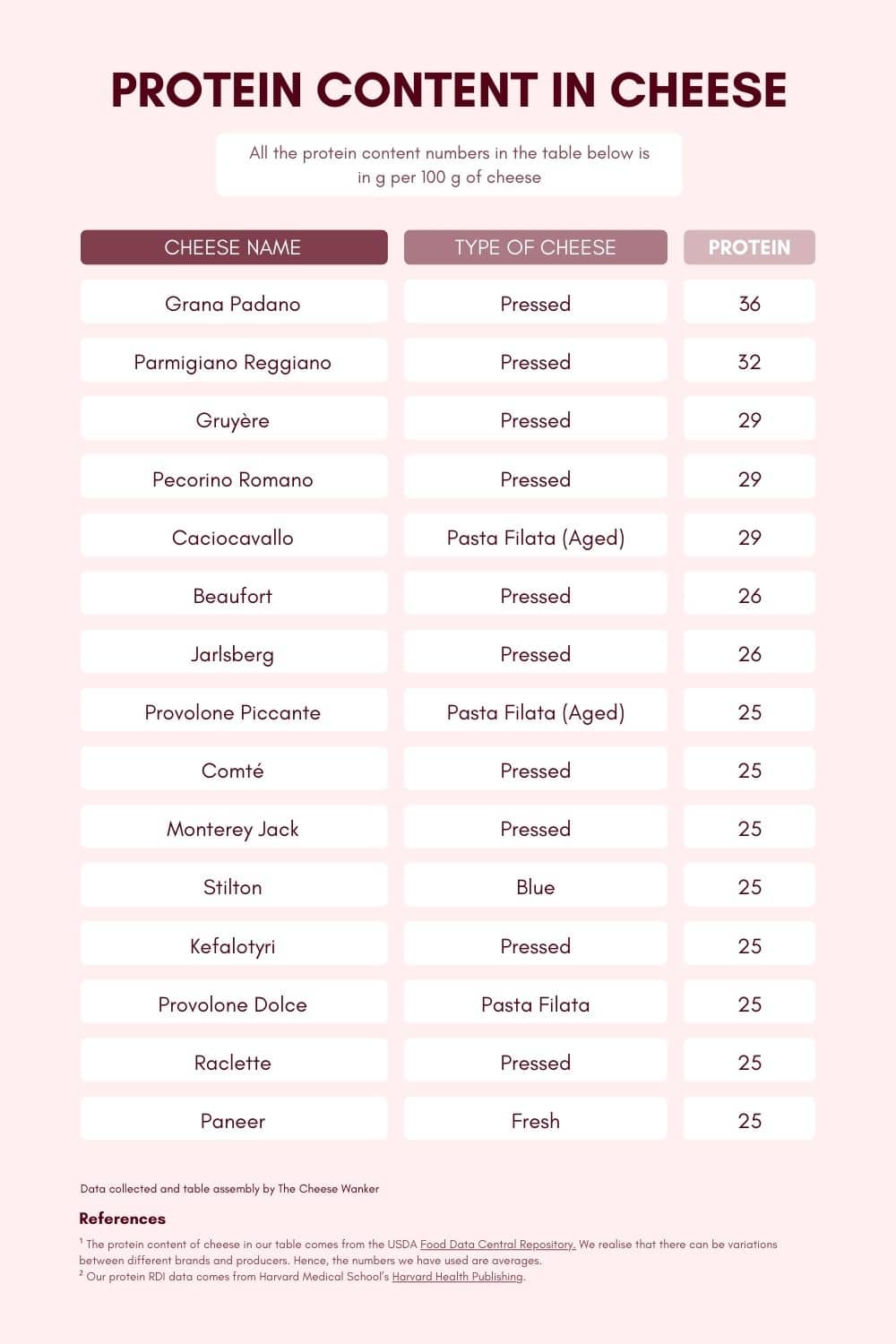
References
¹ The protein content of cheese in our table comes from the USDA Food Data Central Repository. We realise that there can be variations between different brands and producers. Hence, the numbers we have used are averages.
² Our protein RDI data comes from Harvard Medical School’s Harvard Health Publishing.
